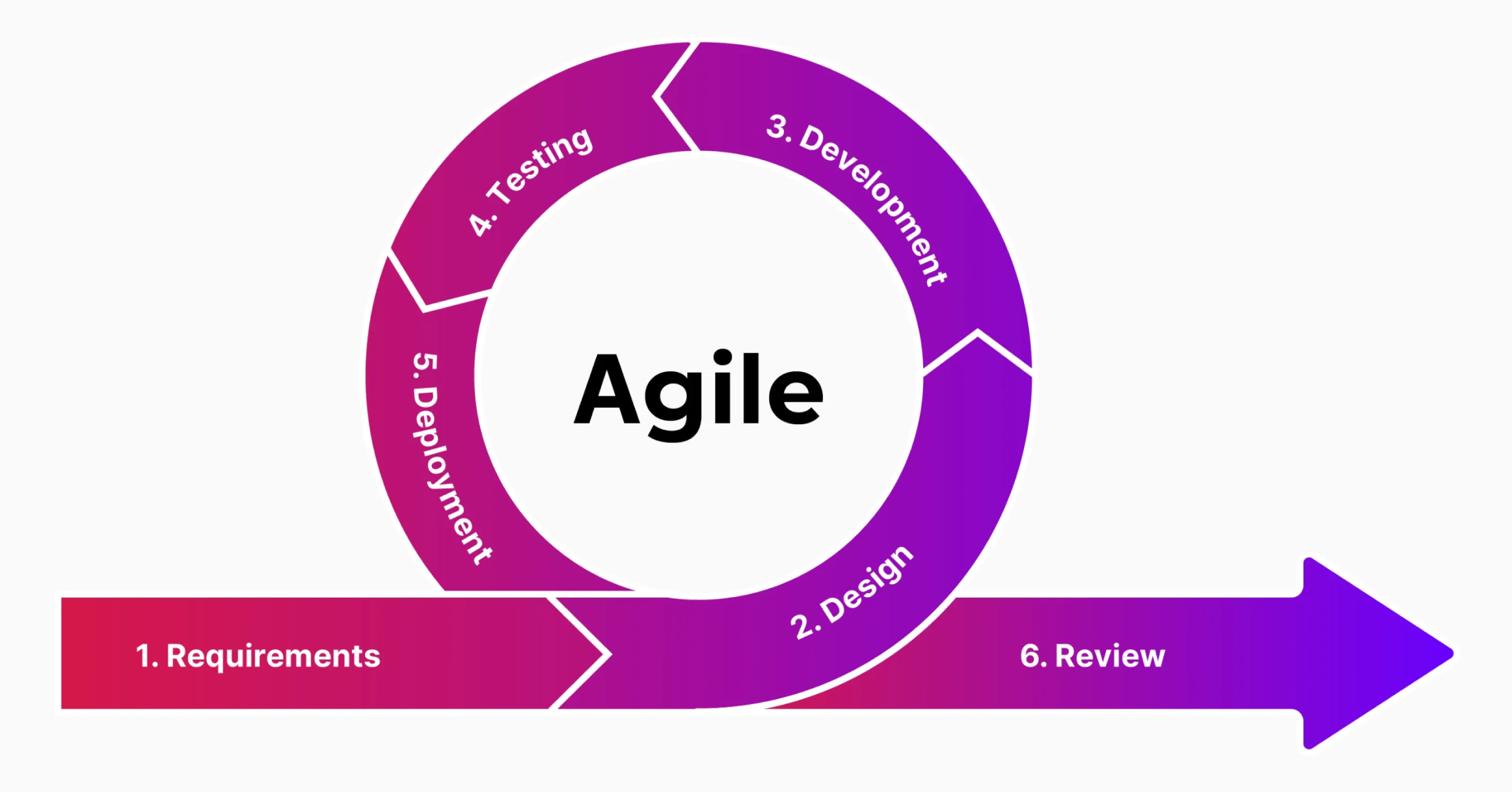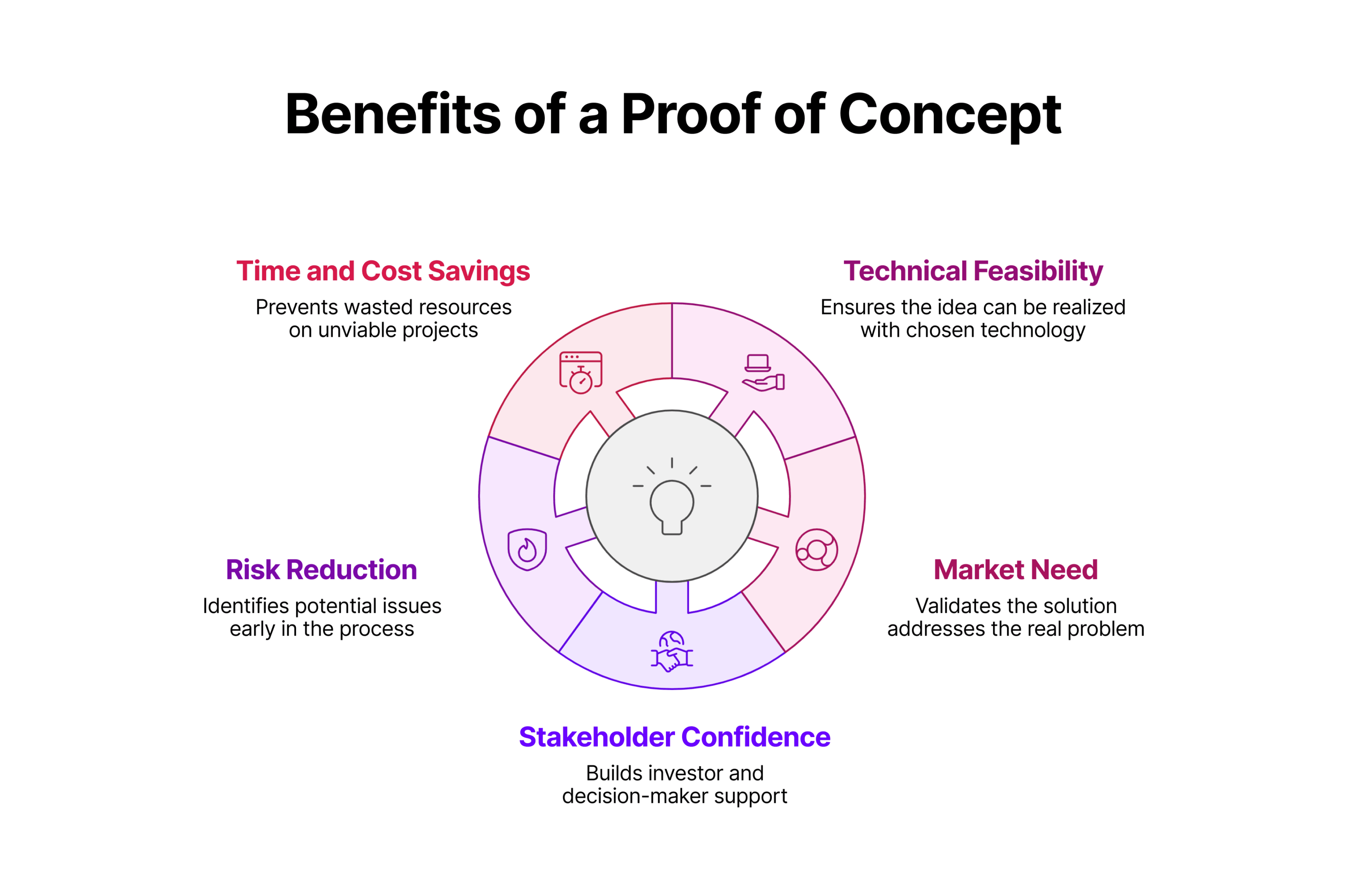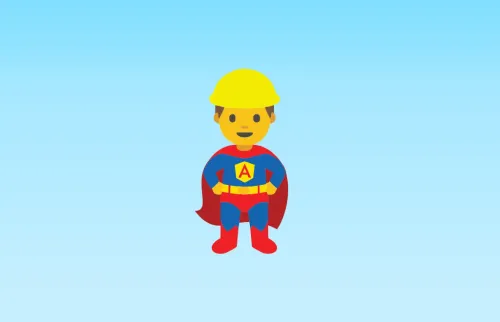How To Create a Proof of Concept in Software Development?
Dec 24, 2024
If you are getting into software development, you have likely heard the term proof of concept (PoC) more than once. Proof of concept in software development is a major part of starting any project.
Creating a PoC is the smart way to test if your idea is possible, both technically and practically before you invest time, resources, and energy into full development. Think of it as your experiment. It answers a fundamental question: Can this idea work?
In this guide, we will walk you through the what, why, and how of PoC development in a clear and practical way. No matter your role, developer, project manager, or entrepreneur - knowing how to create a PoC can make all the difference.

What Is a Proof of Concept in Software Development?
A proof of concept in software development is exactly what it sounds like, a way to “prove” that your project can work. In other words, it is like creating a miniature version of your software project to see if it works the way you planned. The whole point of a proof of concept is to see if your software idea can work. It is about showing that your system, app, or product can do what you need it to before you commit to building it.
POC is performed in the early stages of development before spending too much time and resources on a project. This can be seen as an approval in the process of project management, suggesting that you are prepared to go on to the product development stage. With a PoC, you are proving that your idea has a strong foundation before you invest too.
Plus, a successful PoC can help you gain buy-in from stakeholders, investors, or team members by showing that your idea is not just theoretical but practical and achievable.
Why Is a Proof of Concept Important?
Why not just build the whole thing and see how product development goes? May be on your mind. It may seem promising but going straight into the developing phase without validating your idea first is a risky step.
Building software takes time and money, and a PoC helps you avoid expensive mistakes by letting you:
- Technical Feasibility: Can this idea be brought to life with the technology stack that you have chosen?
- Market need: Does your solution solve a real problem, and will users find it useful?
- Secure stakeholder confidence: A PoC can demonstrate to investors or decision-makers that your idea is worth backing.
- Reduces risk: A PoC allows you to identify problems early on and adjust course before you’re too far down the road.
- Saves time and money: Think about putting in months of work, only to find out it doe not work or nobody even wants to use it.
Simply put, a PoC is your way of saying: Let’s test if this idea works before we go all in with our money and time.
How to Create a Proof of Concept in Software Development: Step-by-Step
Now that we know the what and why of a PoC, let’s get into the how. It is not just about quickly throwing together a rough version of your final product. Each step is important, and the process needs to be well-planned. We will break it down into simple steps that you can easily follow for your software project.
Step 1: Clearly Define Your Objective
Let’s start with the basics: what is your goal here? If you do not have a clear goal, your PoC will be all over the map, and you will not be able to tell if it is doing what it is supposed to. To keep things on track, make sure you define the problem you are trying to solve first. This could be technical (e.g., Can we integrate our app with this external API efficiently?) or business-related (e.g., Will customers pay for this service?).
You do not need to prove everything about your idea - just the most important piece. Be specific and keep it simple.
Ask yourself these key questions:
- What exactly are you trying to prove?
- What do you need to test to see if your idea will work?
- Why is solving this problem important?
Once you have figured out the problem, you can move forward to the next step.
Step 2: Figure out the best solution and clarify your main ideas.
Now that we have identified the problem in step one, we can move on. The next step is finding solutions, this is best done with a brainstorming session. When the appropriate solution is chosen, make a map along which the entire product development process will move.
Every new software idea comes with a key assumption. These are the things you believe to be true but have not yet proven. For example:
- Users will want this feature.
- This technology stack can handle the required load.
- The integration with a third-party service will be smooth.
List these assumptions, then focus on testing the riskiest ones with your PoC to ensure you are on the right path.

Step 3: Choose the Right Tools and Technologies
Considering that we are still in the test period and it is not yet a complete product, we have the opportunity to choose technologies and tools that will allow us to finish the process faster. The tools and technologies that we will use now do not necessarily mean that we will have to use the production of the final version. This gives us the freedom to focus on speed and flexibility, without worrying about long-term decisions.
In that case, you can ask yourself:
- What’s the quickest and simplest way to build this?
- Do I need a custom backend, or can I use a service like Firebase?
- Can I use a tool like Figma to make a clickable mockup instead of coding the UI?
Step 4: Build a Minimal Prototype
This part is reserved for the build phase. It might be the most interesting part of all the steps. Your PoC is starting to take shape here.
It does not have to be perfect by any means. You are not trying to create a fully functional app or product. Instead, you are testing whether the most critical parts of your idea work as expected. At this prototype stage, there is no need for coding, a clickable mockup is enough for customers to see the main functionality
As an example, we can take a fitness booking application. You might develop a simple interface that lets users check class availability and reserve a spot. You do not need to worry about refining the design or adding extra features yet. The focus is on testing whether the key functionality works.
5. Test Your Proof of Concept
The 5th phase of this short 6-step guide is the test phase, which means that after the prototype is released to us, it is time to test it. This means we need to share our PoC with key stakeholders, whether it is a small group of users, potential investors, or internal teams and see what their feedback is. Any constructive feedback is welcome and helpful.
Here, you are checking two things:
Technical feasibility: Does your solution work like it is supposed to? Are there any bugs or issues?
User validation: Does the PoC solve the user’s problem? Do they find it useful and easy to use?
With these questions, we will get answers that will help us get to a better final product. Maybe they like the concept but find the interface confusing. Or maybe the technology works great but is slower than expected.
Overall feedback helps us find any gaps, challenges, or misalignments in your original idea.

Step 6: Analyze the Results
After testing, the next step is to look at the results. Did your PoC prove your idea is solid? Were there any unexpected problems? And most importantly, did users actually like the solution and find it easy to use?
At this point, you will know whether to push forward. There are three possible outcomes:
- Success: The idea works, and you are ready to move on to full development.
- Partial Success: It has potential, but a few things need to be improved.
- Failure: It did not work, and it is time to rethink the approach.
But here is the thing-even if it did not work out, it is not a loss! You have learned what does not work, saving yourself a lot of time and money down the road. Whether it is time to celebrate or adjust, you are still making progress.
Proof of Concept in Software Development Example: Learning from Real-Life Projects
To make it even clearer, let’s look at a real-life proof of concept in software development example. Let’s say some startup company have idea for making fitness app that personalizes your workout plans based on real-time data from wearable smartwatches like AppleWatch or Samsung Galaxy Watch.
Before building the full app, the team creates a PoC to test the most critical element, whether the app can successfully pull data from wearables and generate useful workout plans. They build a simple interface that retrieves basic data like steps, heart rate, and sleep patterns, and uses it to suggest a daily workout routine.
Poc test can be made in a small group of users to see if the data from smartwatches is pulled accurately, the workout plans are enough personalized, are they truly based of tha data that is coming from the smartwatches.
The feedback whatever is positive or negative will lead a improvement before moving into next stage-development.
Conclusion
Finally, we can conclude that the creation of PoC is a very important step in the software development part. PoC allows us to correctly perceive the risks and opportunities coming from our idea. It helps us answer questions before we go into production.
That way we can reduce risks, save time and resources. PoC is a perfect way to see the idea more clearly and gain a greater degree of confidence in it, with the feedback we will receive from the test team. Therefore, when working on a new product, it is recommended to insert this step. Taking the time to build a PoC could be the difference between success and failure.

Monika Gjorgjievska
Book a Free Consultation
Trusted by leading businesses worldwide
Book a Free Consultation
You may also like

Towards Perfect ES Query Generation with Elastic-builder
Apr 09, 2020
Velimir Graorkoski

Elastic Builder To The Rescue
Apr 22, 2020
Velimir Graorkoski

Understanding the Most Effective Practices of Remote Working
May 19, 2020
Tanja Zlatanovska